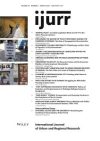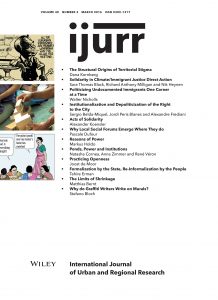This article develops the concept of territorial stigma by analyzing how it can be cultivated at the level of political institutions across administrative divides. I consider the case of Detroit’s regional water department, which until 2016 was owned and operated by the city and served over 120 suburban regional municipalities. I start by examining the cooperative city–suburban water system expansion in the 1950s and then analyze the rise of Detroit’s first black-led administration in 1974, after which the water authority became a key regional institution that provided an opportunity for white suburban leaders to organize against the city. I find that suburban leaders advanced their immediate goal of mitigating rate hikes by declaring the city to be greedy and inept, instead of acknowledging structural conditions that increased operational costs. This had the effect of reproducing racialized stereotypes at the political level, which had enduring effects. The argument builds on the existing literature on territorial stigma by (1) identifying state institutions as sites for the propagation of stigma and (2) considering stigmatized places in relation to their non-stigmatized neighbors. The analysis integrates material-structural and culturalsymbolic factors in order to understand the perpetuation of regional urban inequalities.
This article has been awarded the 2016 Best Article Prize and is now free to view for one year.

